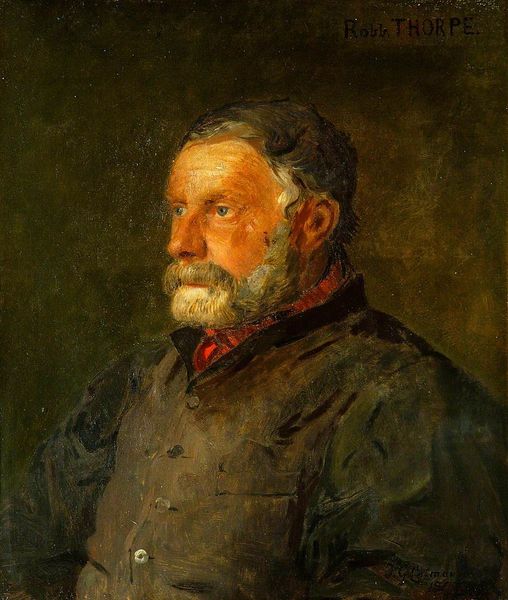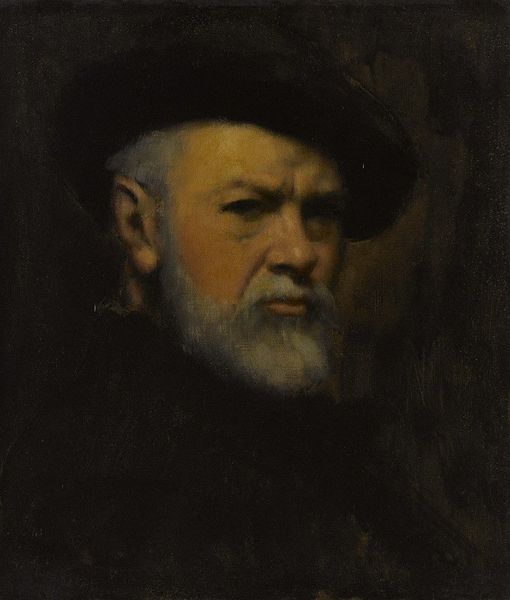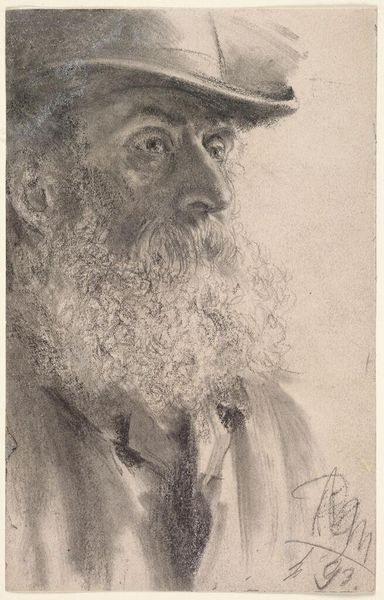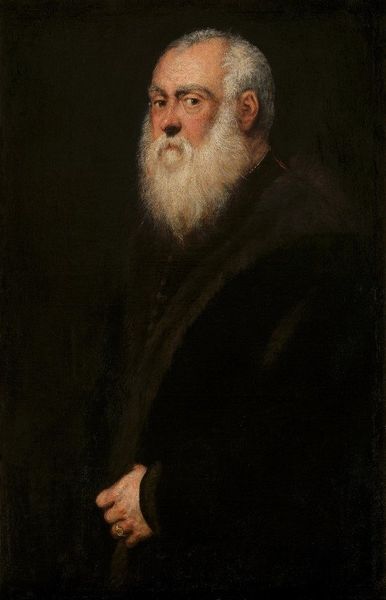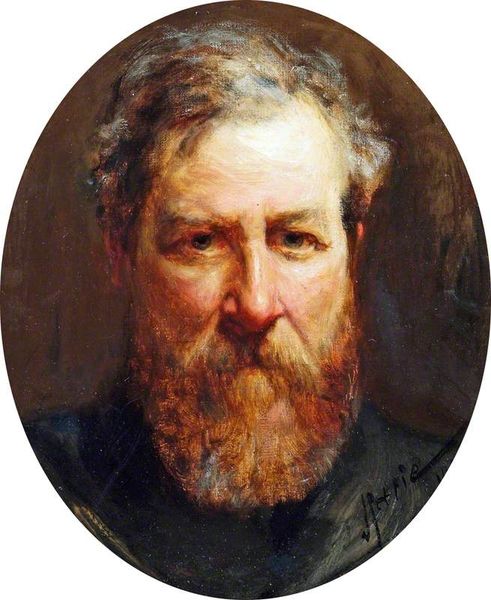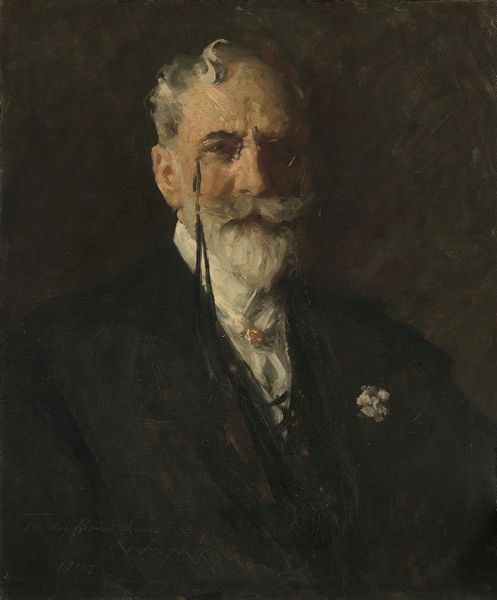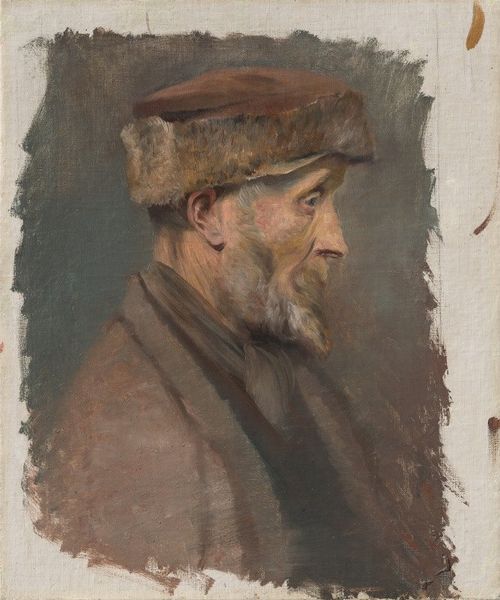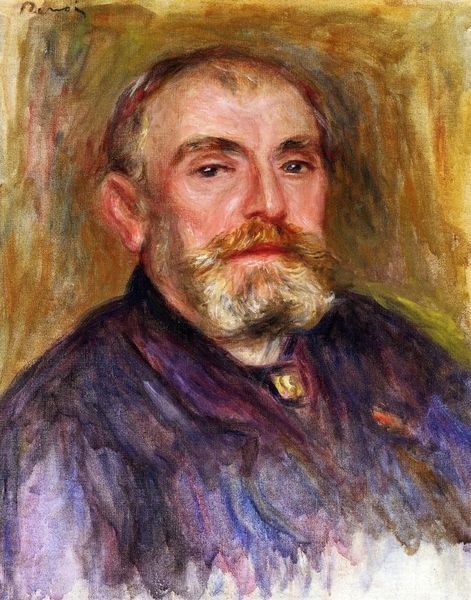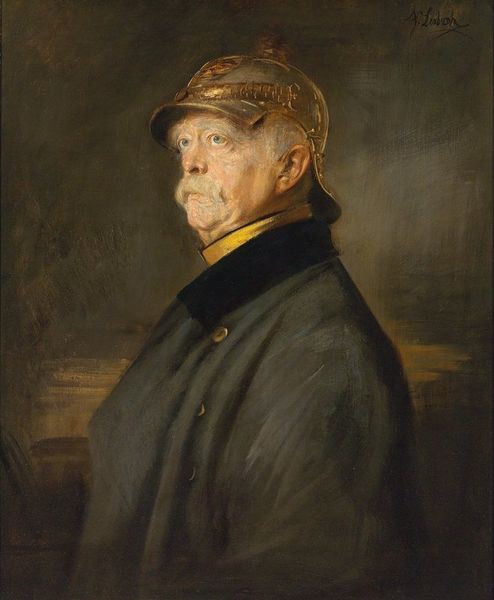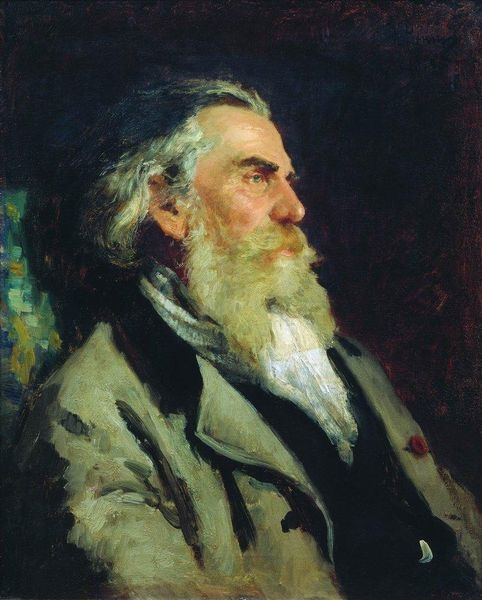
painting, oil-paint
#
portrait
#
portrait
#
painting
#
oil-paint
#
modernism
#
realism
Copyright: Public domain
Curator: This is "Thomas Green," painted in 1899 by Frederick George Cotman, using oil on canvas. Editor: He looks weary, like someone deeply rooted in a hard-won existence. The impasto application around his weathered face conveys so much texture, you can almost feel the salt spray on his skin. Curator: Indeed. Consider the masterful employment of chiaroscuro—the way light sculpts his face from the dark backdrop, creating a focal point. Notice, too, how the diagonal of his pose contributes to a dynamic asymmetry within the conventional portrait form. Editor: And look at that cap—clearly a mariner's. The materiality of the clothing, that sturdy dark fabric, signals a life of physical labor and perhaps constant exposure to the elements. One imagines he worked long, tireless shifts. Curator: Observe how Cotman manipulates pictorial space. There's a deliberate flattening; see how the chair back seems almost flush with the figure, denying any real sense of depth. This spatial ambiguity throws focus back to the subject. Editor: It speaks to a directness, a lack of pretension. This wasn't a commissioned piece for the wealthy; it feels more like a sympathetic observation of a working man, his dignity preserved. What sort of canvas and paint were accessible during this period would also be relevant in creating a work that has the textures that we see in front of us? Curator: An excellent point! Understanding the formal devices is to access its inherent meaning—that play between realism and constructedness is key to Cotman’s endeavor. Editor: Exactly! It's not merely a record, but a rendering steeped in class consciousness, the honor of toil and struggle. It's powerful, that humble depiction. Curator: A perfect convergence of form and theme. Thank you. Editor: My pleasure.
Comments
No comments
Be the first to comment and join the conversation on the ultimate creative platform.
